Aug. 7 to Aug. 13
When fishermen from Hongmaogang Village (紅毛港) hauled a human skull out of the waters in 1946, they brought it ashore to worship as a deity.
This practice was not uncommon in maritime societies; the skull was brought to a small shrine already housing a thigh bone that was found in 1923. The skull was deified as the Marshal of the Sea (海府大元帥) and was reportedly quite effective at granting people’s wishes, leading to the construction in 1953 of a proper home called Baoan Temple (保安堂).
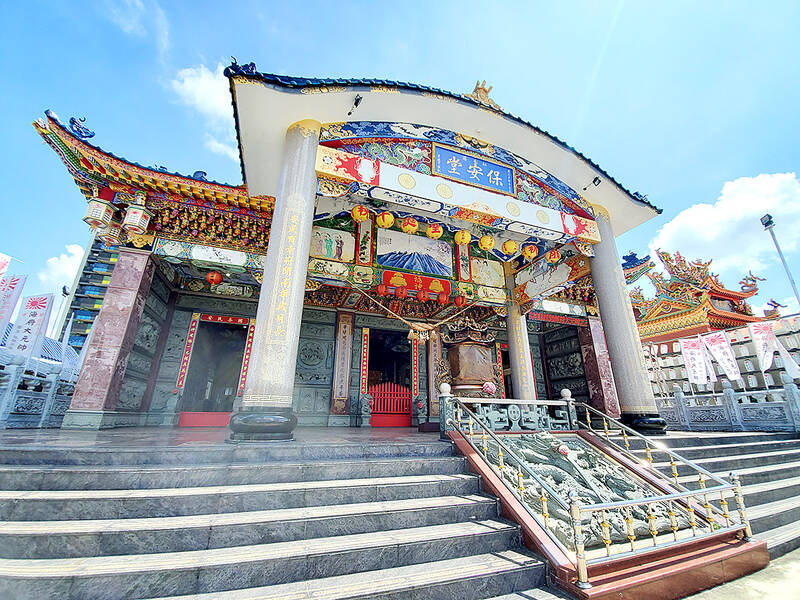
Photo: Chen Wen-chan, Taipei Times
To avoid scaring patrons, the human remains were buried in a gravesite behind the temple. Sources differ on when exactly this happened, but one day a spirit medium who didn’t speak Japanese became possessed by the Marshal, revealing in Japanese that the skull belonged to the commander of the Imperial Navy’s “38th Warship” that sunk during World War II.
In August 1990, worshippers allegedly followed the deity’s directions and reached a Gokukuni shrine in Okinawa dedicated to those who died for the nation. In the shrine was a plaque describing the sinking of the 38th warship, also known as the Yomogi.
The temple’s followers had a 9-meter long replica of the Yomogi built the following year, making it the only shrine in Taiwan that worships a warship. Hongmaogang was demolished in 2007, but worshipers rebuilt Baoan Temple in 2014 in Kaohsiung’s Fengshan District (鳳山), fusing Japanese and Taiwanese architectural styles.
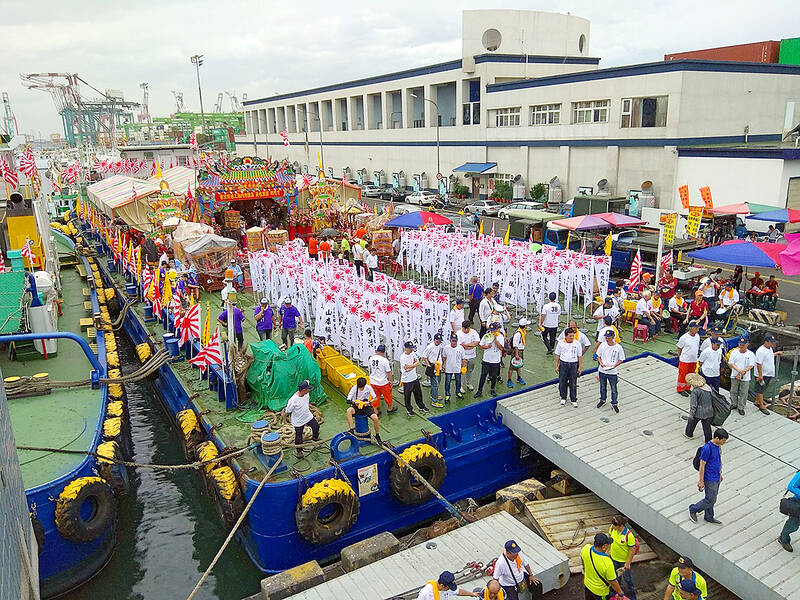
Photo: Hung Ting-hung, Taipei Times
The shrine remains a local curiosity, and also serves as a symbol of Taiwan’s modern relationship with Japan with many dignitaries visiting it. A statue of late prime minister Shinzo Abe was erected outside the shrine after he was killed last year, and his widow visited the temple two weeks ago.
VANISHED COMMUNITY
For centuries, Hongmaogang (“red hair harbor”) was once a bustling fishing village, likely named for the Dutch who were active in the area during the 1600s. Hsieh Kui-wen (謝貴文) writes in the book Continuity and Change: Hongmaogang’s Temples and Religious Beliefs after Relocation (延續與變遷: 遷村後紅毛港的寺廟與信仰) that due to the danger and uncertainty of heading out to sea in the early days, religious beliefs especially held strong in the village. Hongmaogang was actually a series of small settlements spread out across a narrow sandbank, mostly named after the surname of the majority clan. Six of these settlements boasted a major neighborhood temple, plus a dozen more smaller shrines and countless makeshift structures along the shore housing human remains hauled back by fishing boats.
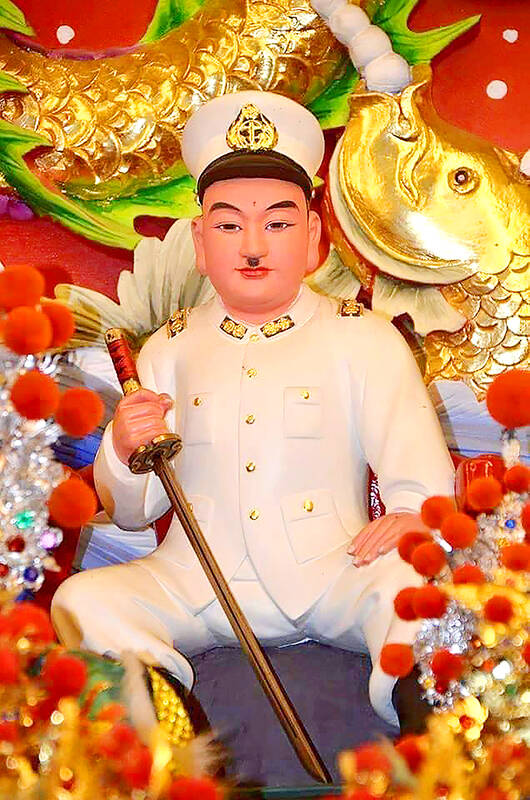
Photo: CNA
The rapid industrialization of Kaohsiung in the 1960s and construction of the city’s second harbor in 1967 greatly affected the village’s livelihood, as it polluted the waters and caused great changes to the marine ecosystem. The harbor cut straight through the sandbank, which the locals saw as an auspicious dragon, and they believe that this ruined their fengshui and sealed their fate.
The village was marked to be razed for further development, so construction was prohibited and the village remained in limbo for four decades in substandard, polluted conditions. After numerous protests and negotiations, the fed-up villagers attempted to blow up a 2,000-tonne ship in Kaohsiung Harbor to paralyze its operations during the afternoon of Jan. 14, 2002.
An intense clash and standoff with the police ensued, and by evening the instigators were arrested and the ship dragged back to shore. The tragic saga finally ended when residents accepted a relocation plan in 2005, and by 2007 all of them had been relocated. Today the land is part of a massive container terminal.
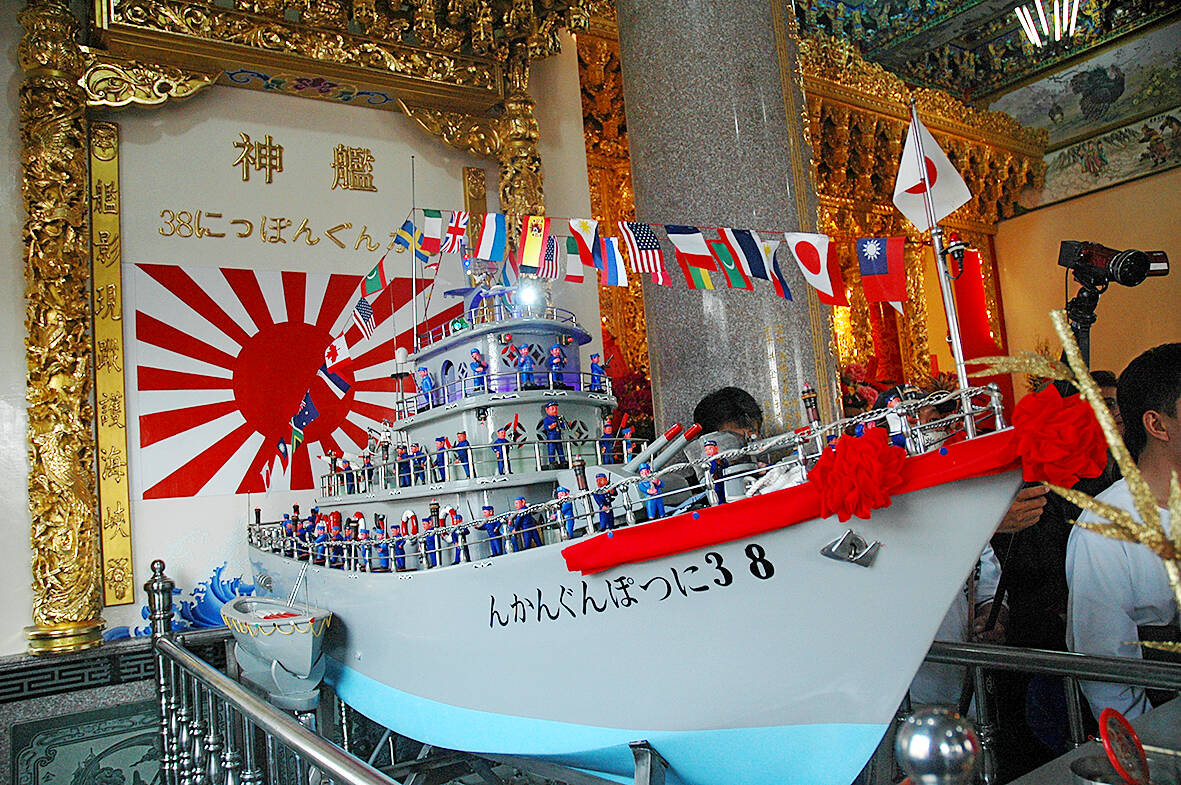
Photo: Fang Chih-hsien, Taipei Times
Hsieh writes that residents rebuilt most of the temples in their new homes, helping maintain a link to their disappeared homeland in a new environment. Despite being scattered across different neighborhoods, they still gather at the temples to pray and conduct rituals.
DEITIES FROM THE SEA
Many of Hongmaogang’s temples had origin stories related to the ocean, such as fishermen finding an effigy while at sea. Human remains were often brought back and placed in a small bamboo shrine by the shore. During the 1960s, there were reportedly at least 30 shrines of this nature in Hongmaogang.
Two of Baoan Temple’s three main deities were found this way. According to the temple, a fisherman found a human thigh bone while fishing in 1923 and brought it to the village to worship in a bamboo hut. This became the temple’s principal deity, Lord Kuo of a Thousand Years (郭府千歲). The second deity was a villager surnamed Chen (陳) who reportedly came from China alone and had no family to worship him after he died. He appeared in a neighbor’s dream and expressed his wish to be placed in Baoan Temple, becoming Marshall Tsung (宗府大元帥). The third was the aforementioned skull.
The trio’s original effigies were made out of camphor wood that was also fished out of the ocean. According to local legend, fishers at first thought that they had come across a major catch. But when they realized it was a piece of wood, they angrily threw it back into the ocean and cast their nets, only to snare the wood once more. They threw it back for the third time and cast their net in the opposite direction — but again ended up ensnaring the wood. They were then convinced that the camphor was sacred, and brought it back to the village.
When it was time to carve the effigies to represent the deities, it’s said that the wood’s size was just right for three statues. Although Lord Kuo of a Thousand Years is still the principal deity, placed in the center of the altar, the temple says that the Marshal of the Seas manifests more often when spirit mediums ask questions, and is more powerful.
Baoan Temple was first rebuilt in 1974 when a fisherman surnamed Su (蘇) fell asleep on his boat and dreamt of the Marshal of the Seas. The deity told him to move the shrine to a spot on the beach with a turtle nest. Su searched for the place shown to him in the dream, and upon finding turtle eggs in the sand, the temple was moved there.
BATTLESHIP REVEALED
Around 1990, the commander’s spirit possessed a spirit medium and expressed his desire to visit a Gokoku Shrine in Japan. Some accounts, including Hsieh’s, state that this is the first time the skull’s identity was revealed. Others maintain that it was already known by then.
At least, this was when the temple’s worshippers confirmed the 38th warship’s identity by visiting the Gokoku shrine in Okinawa. According to Japanese records, the Yomogi was a destroyer that arrived in the Zuoying military port in 1941, later remodeled into a patrol vessel. In November 1944, the warship set out toward Manila to transport the survivors of the battleship Musashi, which was destroyed by Allied airstrikes in October 1944, to Taiwan. The Yomogi was hit by torpedoes fired by a US submarine on Nov. 25, 1944 in the Bashi Strait, and all 145 people on board perished.
The replica ship has 72 crew members who each have specific duties, and is fully furnished according to a real warship. At the Marshal of the Sea’s request, the shrine plays the Japanese national anthem and battle songs on certain days as well as morning bugle calls. Otherwise, they are reportedly content with Taoist religious customs. Worshippers have made several trips to various war shrines in Japan, including the controversial Yasukuni Shrine.
Taiwan in Time, a column about Taiwan’s history that is published every Sunday, spotlights important or interesting events around the nation that either have anniversaries this week or are tied to current events.
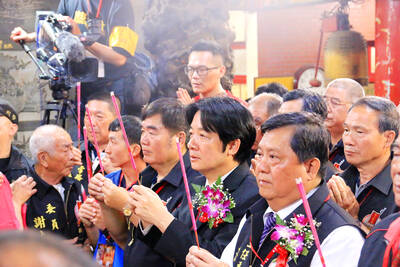
The Democratic Progressive Party (DPP), Chinese Nationalist Party (KMT), and the country’s other political groups dare not offend religious groups, says Chen Lih-ming (陳立民), founder of the Taiwan Anti-Religion Alliance (台灣反宗教者聯盟). “It’s the same in other democracies, of course, but because political struggles in Taiwan are extraordinarily fierce, you’ll see candidates visiting several temples each day ahead of elections. That adds impetus to religion here,” says the retired college lecturer. In Japan’s most recent election, the Liberal Democratic Party lost many votes because of its ties to the Unification Church (“the Moonies”). Chen contrasts the progress made by anti-religion movements in
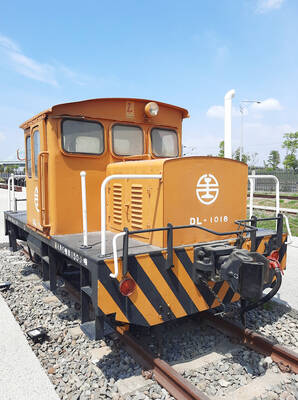
Taiwan doesn’t have a lot of railways, but its network has plenty of history. The government-owned entity that last year became the Taiwan Railway Corp (TRC) has been operating trains since 1891. During the 1895-1945 period of Japanese rule, the colonial government made huge investments in rail infrastructure. The northern port city of Keelung was connected to Kaohsiung in the south. New lines appeared in Pingtung, Yilan and the Hualien-Taitung region. Railway enthusiasts exploring Taiwan will find plenty to amuse themselves. Taipei will soon gain its second rail-themed museum. Elsewhere there’s a number of endearing branch lines and rolling-stock collections, some

This was not supposed to be an election year. The local media is billing it as the “2025 great recall era” (2025大罷免時代) or the “2025 great recall wave” (2025大罷免潮), with many now just shortening it to “great recall.” As of this writing the number of campaigns that have submitted the requisite one percent of eligible voters signatures in legislative districts is 51 — 35 targeting Chinese Nationalist Party (KMT) caucus lawmakers and 16 targeting Democratic Progressive Party (DPP) lawmakers. The pan-green side has more as they started earlier. Many recall campaigns are billing themselves as “Winter Bluebirds” after the “Bluebird Action”

Feb 24 to March 2 It’s said that the entire nation came to a standstill every time The Scholar Swordsman (雲州大儒俠) appeared on television. Children skipped school, farmers left the fields and workers went home to watch their hero Shih Yen-wen (史艷文) rid the world of evil in the 30-minute daily glove puppetry show. Even those who didn’t speak Hoklo (commonly known as Taiwanese) were hooked. Running from March 2, 1970 until the government banned it in 1974, the show made Shih a household name and breathed new life into the faltering traditional puppetry industry. It wasn’t the first